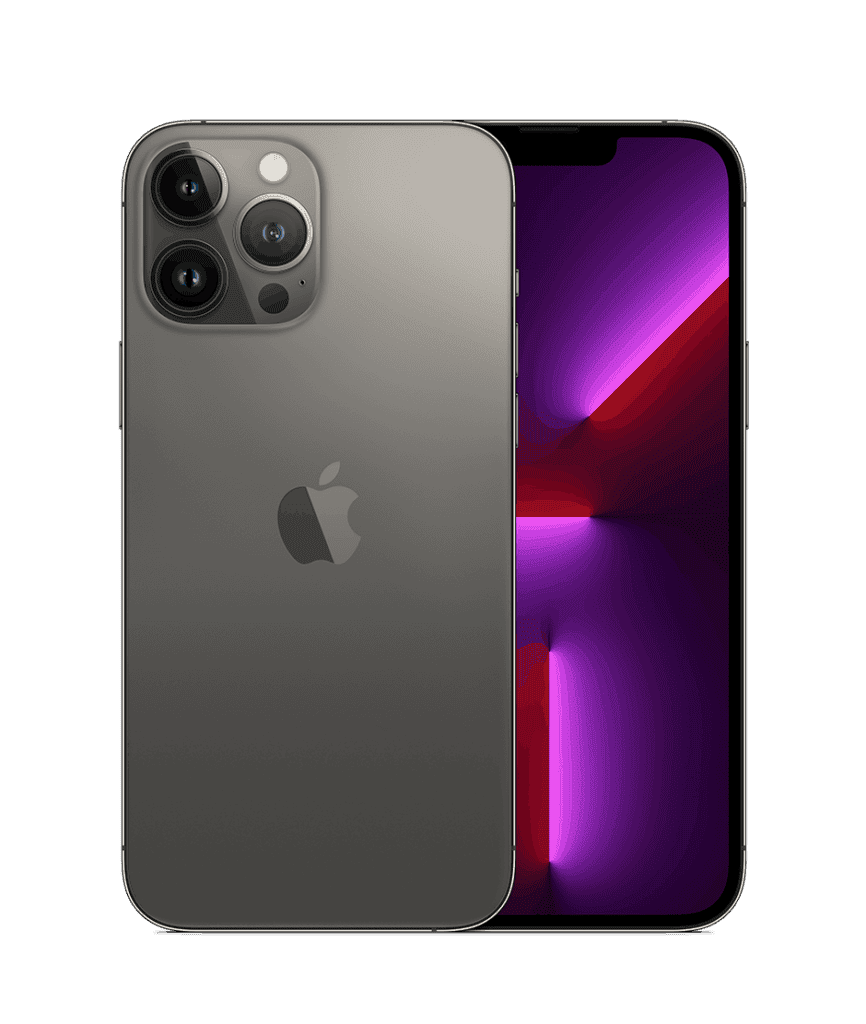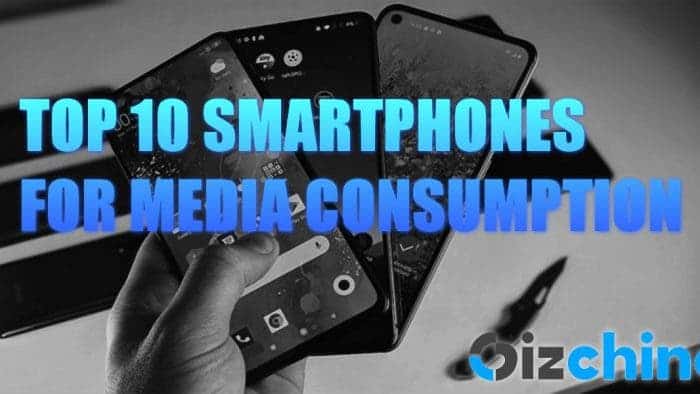September is closing its doors, and you probably are eagerly waiting to see the list of best smartphones launched so far. Well, if you’re in the market looking for a device with good capabilities for consuming media, we are to serve you. we are here to bring a new edition of our “Top 10 smartphones for Media Consumption” listing. We’re reaching the end of the year, but there are a lot of new smartphones coming. So the year definitively still has a lot to offer. What stands right nows as the best offerings for media consumers? For some users, media consumption is one of the reasons for pushing forward the smartphone market. Especially with the new standards created by the pandemic. People need to prioritize isolation over public meetings and some cases need to stay at home more often. Sometimes we just need to find ways to kill boredom.
In recent times, we’ve been passing countless hours watching movies through online video streaming or gaming services, we’ve been navigating through social media feeds or we’re playing games with our handsets to kill boredom. If you need a good smartphone for media consumption’s sake, then you will need to look at some important factors – Display, Battery Capacity, and certain aspects of the hardware. We hope that on this list, you will get the necessary help to get a good smartphone. Hopefully, any of these devices will meet your needs in this particular department. We’ve elaborated a list of the top 10 smartphones for media consumption you can get in September 2021.
TOP 10 SMARTPHONES FOR MEDIA CONSUMPTION – DISCLAIMER
The devices in the list are, in our opinion, the best devices for watching Netflix and other streaming platforms such as YouTube, Twitch, etc. Moreover, they also deliver great performance and are ideal for trending apps such as TikTok, Instagram, and even Clubhouse. They can also play demanding games without much stress. So if you’re needing a device that will meet all your “multimedia needs” check out our list with good recommendations. Take in mind that these are just the best 10 devices in our opinion. You can always have better options in your mind, so feel free to share your thoughts in the comments section. For the next month, there will be more options, and a new list with our best ten picks.
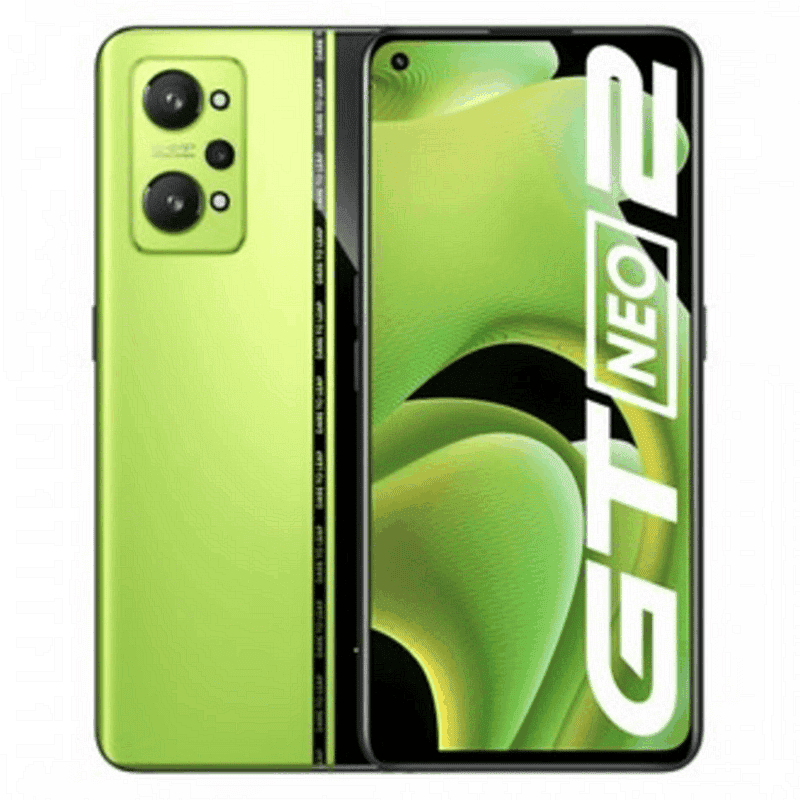
Realme GT Neo2
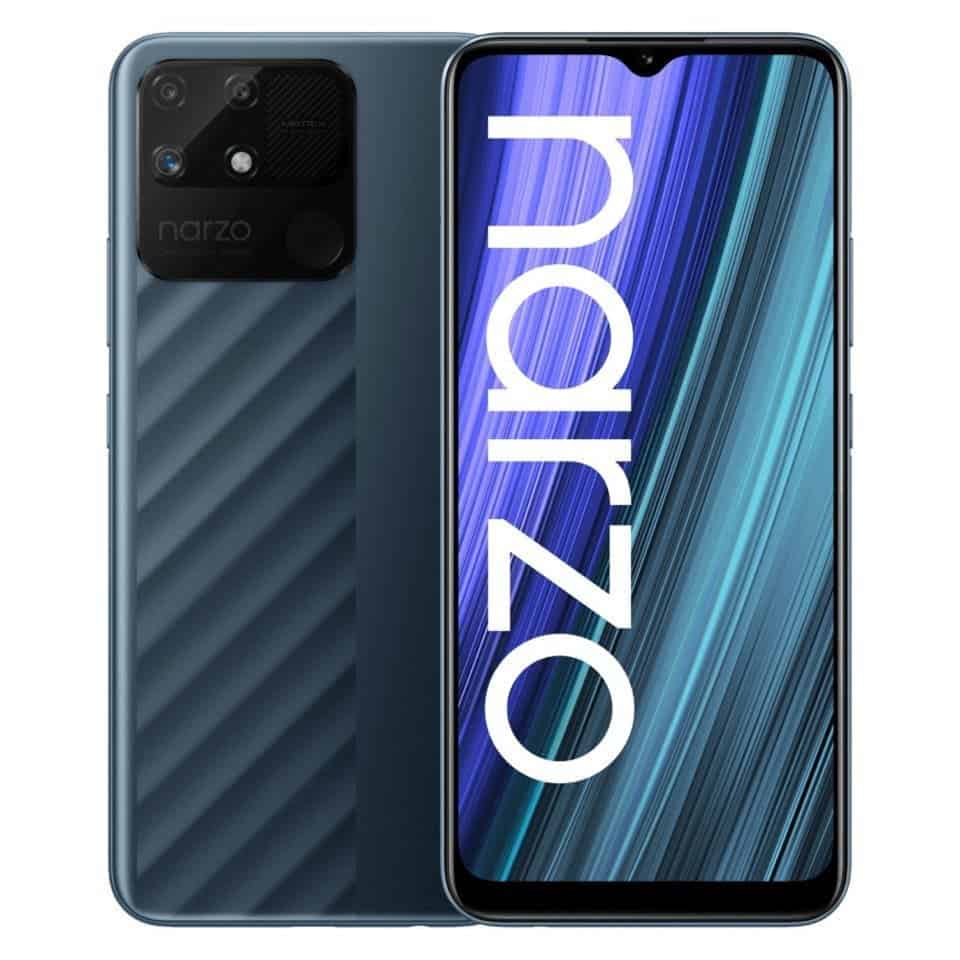
Realme Narzo 50A
We continue our list with the Realme Narzo 50A. The new entry-level smartphone launched alongside the Narzo 50i in India. These devices set the beginning of a new Narzo 50 series of mid-range and low-end smartphones. The duo is comprised in the low-end category, but the Narzo 50A stands as a solid offering due to the solid mid-range specifications and a huge battery.
The Realme Narzo 50A flaunts a 6.5-inch display with a waterdrop notch and an 81.7 percent screen-to-body ratio. This device has a common IPS LCD with just 570 nits brightness. It also comes at a lower HD+ resolution with 1,600 x 720 pixels. The device may not be the best if you want to see movies in the most crispy resolution. However, the HD+ resolution is still decent at the end of the day. Moreover, with this device’s massive battery it can easily stand for an entire day or even two without much sacrifice. The panel has a waterdrop notch just like most of Realme’s low-end devices.
Under the hood, the Realme Narzo 50A is pretty much a mid-range smartphone. As a result, we have the aging MediaTek Helio G85 chipset based on the 12 nm architecture with two ARM Cortex-A75 cores and six ARM Cortex A55 cores. Of course, this chip isn’t the most powerful, but can still handle modest games and demanding ones in modest settings. So, if you’re in the market just for media content the device will serve you well as it can easily handle common tasks, social media apps without any hassle. The device has a Mali-G52 MC2 if you want to know. Moreover, it is available with 4 GB of RAM. Storage-wise it’s 64 GB or 128 GB depending on the variant. Since this is a mid-range smartphone, you can extend the storage with a micro SD card.
The Realme Narzo 50A has a huge camera island comprising a triple-camera setup. The main shooter is a Samsung GN1 sensor with 50 MP resolution, f/1.8 aperture, and PDAF. The secondary snapper is a 2 MP resolution with f/2.4 aperture and macro lens. The final sensor is a 2 MP sensor with an f/2.4 aperture with depth-sensing purpose. The front-facing snapper is an 8 MP camera with f/2.0 aperture, 26mm lens, and 1.12 um pixel size.
The device comes with just a single speaker but comes with a 3.5 mm headphone jack which is becoming rare on premium devices. In terms of connectivity, we have a USB Type C port, dual-band Wi-Fi, Bluetooth 5.0 with A2DP and LE. The device also has GPS with A-GPS, GLONASS, and BDS. The fingerprint scanner is placed in the rear. The Narzo 50A draws powers from a massive 6,000 mAh battery with 18 W fast-charging and also works with reverse charging so you can charge other devices or accessories.
Due to this solid package of specs, we believe that this Narzo 50A is a good option to join the Top 10 Smartphones for Media Consumption. Especially if you don’t want to pay much.
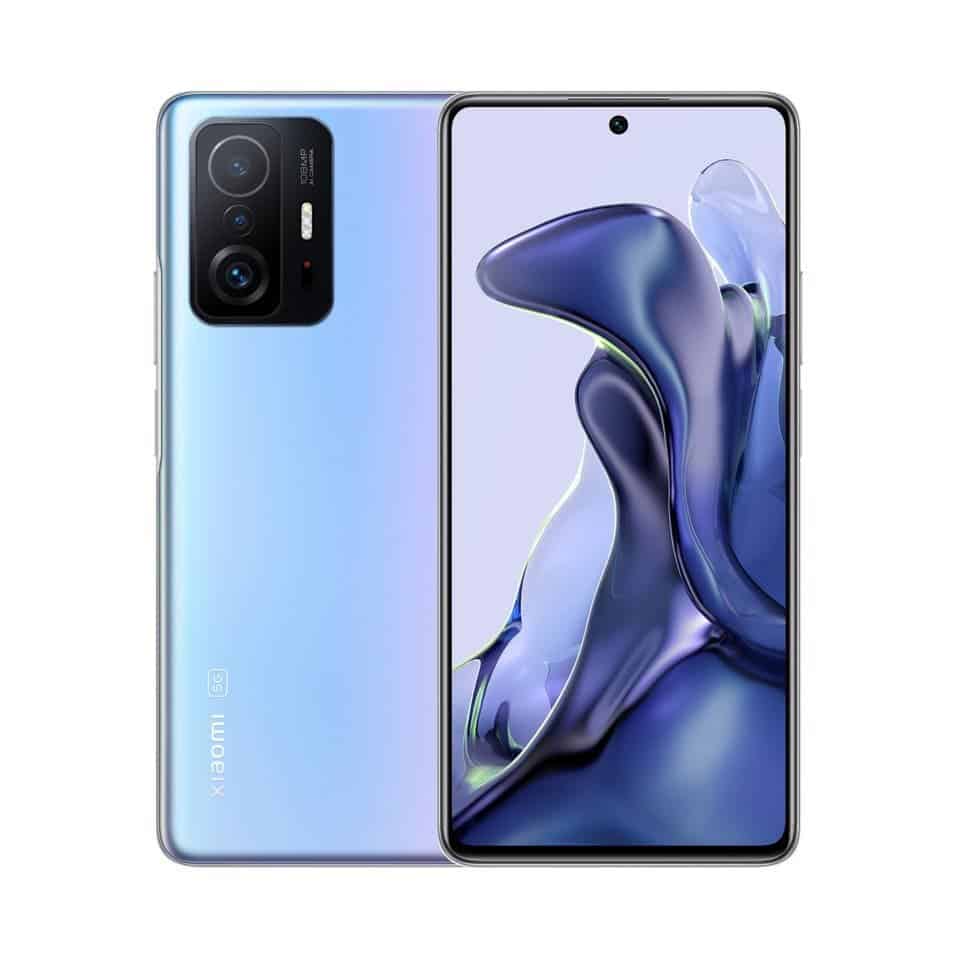
Xiaomi 11T
Earlier this month, Xiaomi unveiled the Xiaomi 11T series with nice specifications and a big potential for media consumers. These devices come as more “cost-effective” options over the regular Mi 11 flagship series. Also, they are the first smartphones from Xiaomi to leave the “Mi” branding behind.
The Xiaomi 11T is the starting point for the Xiaomi 11T series. It comes with a gorgeous 6.67-inch AMOLED display with a 120 Hz refresh rate. The panel also has 1B colors, HDR 10+ support, 800 nits of typical brightness, and 1,000 nits of peak brightness. The resolution is Full HD+ with 2,400 x 1,080 pixels and 395 pixels per inch density. The device is covered with a layer of Corning Gorilla Glass Victus. The panel has an 85 percent screen to body ratio, IP53 certification for dust and splash protection.
Under the hood, Xiaomi is favoring MediaTek over Qualcomm for the first time in its “11 flagship series”. The Xiaomi 11T packs the MediaTek Dimensity 1200 SoC 5G. For those unaware, the DImensity 1200 packs 1 x 3.0 GHz ARM Cortex-A78 core, 3 x 2.6 GHz ARM Cortex-A78 cores, and 4 x 2.0 GHz ARM Cortex-A55 cores. In terms of graphics, there is a powerful Mali-G77 MC9 GPU. The Dimensity 1200 is certainly one of the best chipsets released in 2020 and can run anything on Google Play Store without any hassle. Games will run fine and social media apps will be a breeze. The device is available with 8 GB of RAM, but for storage, you’ll have to select 128 GB or 256 GB of UFS 3.1 storage. This handset lacks a microSD card slot just like the big majority of Xiaomi flagships.
The Xiaomi 11T has a new camera design that follows the Mi MIX 4 guidelines. It comes with three sensors. This setup comes with a primary 108 MP camera, with f/1.8 aperture, 26 mm lens, 0.7 um pixel size, and PDAF. The device also has 8 MP resolution, f/2.2 aperture, 1.12 um pixel size, and ultrawide view. The third and final sensor is a 5 MP telephoto macro module with Auto-Focus, f/2.5 aperture, and 50 mm lens. For selfies and video calls, there is a 16 MP camera with f/2.5 aperture and 1.0 um pixel size.
The Xiaomi 11T comes with Stereo Speakers ensuring an immersive audio experience. The handset comes with dual-band Wi-Fi 6, Bluetooth 5.2 with A2DP, LE, aptX HD, aptX Adaptive. Moreover, there is dual-band A-GPS, GLONASS, GALILEO, and BDS. The handset also has NFC, a USB Type C port, and an IR Blaster.
There is a huge 5,000 mAh battery keeping the lights on, so it shouldn’t disappoint in terms of media consumption. Moreover, the charging is completed with a solid 67 W fast charging. The device runs with Android 11 straight out of the box and MIUI 12.5 on top. The device has solid specifications and we assume it’s on par with the standards for Top 10 Smartphones for Media Consumption.
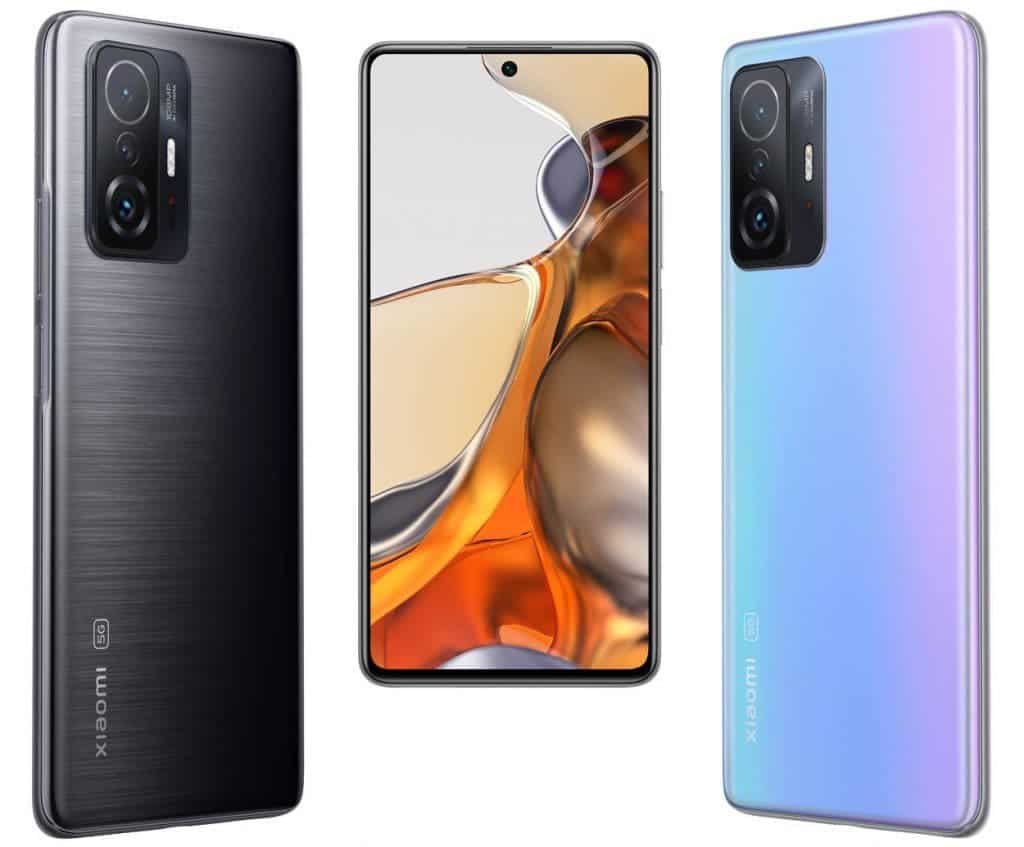
Xiaomi 11T Pro
We follow the list with the Xiaomi 11T Pro. This is the Pro variant for the new 11T series and has some improvements over the vanilla device. The Xiaomi 11T Pro flaunts a 6.67-inch AMOLED with an 85.1 percent screen to body ratio. Moreover, it has a Full HD+ resolution with 2,400 x 1,080 pixels and a 20:9 aspect ratio. The panel also has Dolby Vision, 1B colors, 120 Hz refresh rate, HDR 10+, and has 800 nits typical brightness and 1000 nits peak brightness. The device is covered with Corning Gorilla Glass Victus. The device has a centered punch-hole and offers IP53 certification for dust and splash protection.
Under the hood, the Xiaomi 11T Pro is more a flagship smartphone than its vanilla sibling. After all, it comes with the Qualcomm Snapdragon 888 5G SoC with 5nm architecture and ARM Cortex-X1 core. The device also has the Adreno 660 GPU which is one of the best mobile GPUs in the market right now. The device runs with 8 GB of RAM or 12 GB of RAM. In terms of storage, it’s one variant with 128 GB and two with 256 GB storage.
The Xiaomi 11T Pro also has a triple-camera setup. It has a 108 MP primary camera with f/1.8 aperture, 26mm lens, 0.7 um pixel size, and PDAF. The secondary module is an 8 MP ultrawide snapper with f/2.2 aperture, 1.12 um pixel size. The third and final sensor is a 5 MP camera with telephoto macro purpose, f/2.4 aperture, 50mm lens, and Auto-Focus. The device has a front-facing snapper with 16 MP resolution and f/2.5 aperture with 1.0 pixel size.
Multimedia is enhanced by stereo speakers tuned by Harman Kardon. Unfortunately, this device also lacks a 3.5 mm headphone jack. So you will need to pick Bluetooth earphones or USB Type-C earphones. The device has a dual-band Wi-Fi 6, Bluetooth 5.2 with A2DP, LE, aptX HD, aptX Adaptive. It also has GPS with dual-band A-GPS, GLONASS, GALILEO, and BDS. It also has NFC, IR Blaster, and a USB Type-C port. The device has a side-mounted fingerprint scanner and runs with Android 11-based MIUI 12.
The Xiaomi 11T Pro draws power from a 5,000 mAh battery with 120 W fast charging. This is the second Xiaomi smartphone after the Mi MIX 4 to have a 120 W fast-charging support. The device offers a solid package of specifications, and as result, joins our Top 10 smartphones for media consumption list.
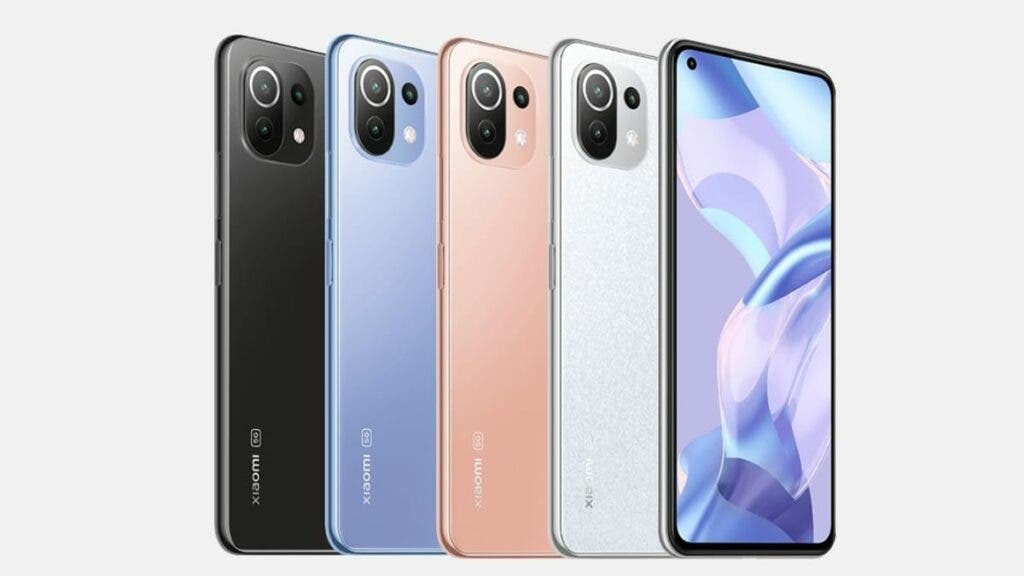
Xiaomi 11 Lite 5G NE
A surprising launch in September was the Xiaomi 11 Lite 5G NE. The device arrived with a mission to replace the Xiaomi 11 Lite 5G launched earlier this year. The reason? Xiaomi is having a hard time trying to gather more units of the SNapdragon 780 5G SoC present in the original Xiaomi Mi 11 Lite 5G. Qualcomm is having trouble manufacturing this chip due to the crisis in the semiconductor industry. As a direct result, Xiaomi decided to launch a new smartphone to fill the gap with the Snapdragon 778G SoC. This chipset has a wider availability. Still, the device brings the original specifications that made this device a solid contender for the top 10 smartphones for media consumption.
The Xiaomi 11 Lite 5G NE flaunts a 6.55-inch AMOLED display with an 85.3 percent screen to body ratio. The device has a Full HD+ resolution with 2,400 x 1,080 pixels and a 20:9 aspect ratio. The display offers a 402 pixels per inch density, Corning Gorilla Glass 5, and IPS53 certification for dust and splash protection.
Under the hood, the Xiaomi 11 Lite 5G NE carries the Qualcomm Snapdragon 778G with 6 nm architecture. This chipset has 4 x 2.4 GHz ARM Cortex-A78 cores and 4 x ARM Cortex-A55 cores at 1.8 GHz. The device also has an Adreno 642L GPU Which is much better than most of the GPUs in the Snapdragon 700 series. So, this game also stands as a solid contender for gaming. The Xiaomi 11 Lite 5G starts with 6 GB of RAM and 128 GB of Internal Storage and goes up to 8 GB of RAM And 256 GB of UFS 2.2 Internal Storage. Interestingly, the device has a microSDXC slot for further memory expansion.
In terms of optics, the device has a 64 MP camera with f/1.8 aperture, 26 mm lens, 0.7 um pixel size, PDAF. The device has an 8 MP ultrawide module and f/2.2 aperture and 1.12 um pixel size. The third module is a 5 MP camera with telephoto macro purpose, f/2.4 aperture, 50 mm lens, and Auto-Focus.
The Xiaomi 11 Lite 5G NE comes with stereo speakers for an immersive audio experience. It also lacks a 3.5 mm headphone jack. The device offers Wi-Fi 6 dual-band, Bluetooth 5.2 with A2DP and LE. For enhanced navigation, there is GPS with dual-band A-GPS, GLONASS, BDS, and GALILEO. It also has an IR Blaster and NFC.
The 11 Lite 5G NE has a side-mounted fingerprint scanner, runs Android 11 with MIUI 12.5 operating system. It draws powers from a 4,250 mAh battery with Fast Charging 33W. The device is also cheaper than the Xiaomi 11T smartphones and the package gives it a medal to join the top 10 smartphones for media consumption ranking.
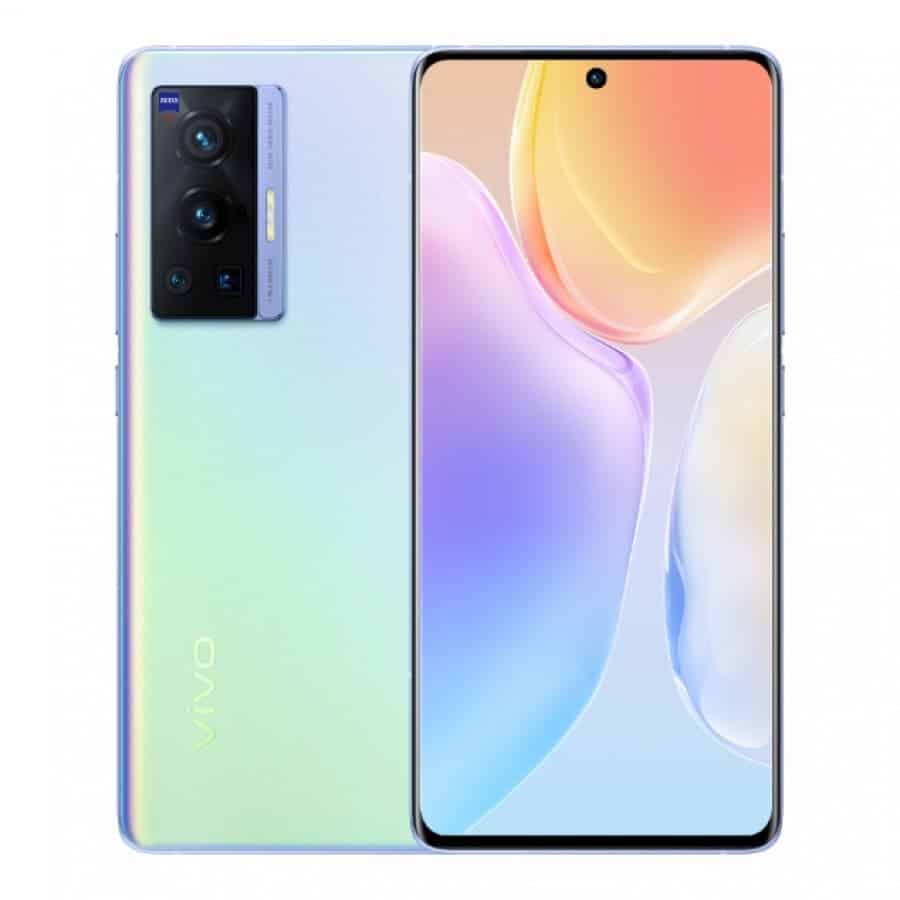
Vivo X70 Pro
This month, Vivo also introduced the Vivo X70 series which is set to come soon for the Indian market. The Vivo X70 is a solid smartphone and deserves a place in our list of top 10 smartphones for media consumption. This is also one of the best devices for capturing photos and videos, hence, it is very good for social media apps like Instagram, TikTok, and others.
The Vivo X70 Pro flaunts a 6.56-inch LTPS AMOLED display with a 90.3 percent screen to body ratio. It comes with a Full HD+ resolution of 2,376 x 1,080 pixels and 398 pixels per inch density. The device also has a 120 Hz refresh rate, HDR 10+, and 1,300 nits of peak brightness. The display is gorgeous and has a centered punch-hole.
Under the hood, the Chinese variant of the Vivo X70 Pro has the Samsung Exynos 1080 SoC. This is the very same chip inside of the X60 series. It comes with a 1 x 2.8 GHz ARM Cortex-A78 core, 3 x 2.6 GHz ARM Cortex-A78 cores, and 4 x 2.0 GHz ARM Cortex-A55 cores. The device also has a Mali G78 MP10 GPU. However, this chip is likely being replaced with a MediaTek Dimensity 1200 in the Indian and global variants.
The Vivo X70 Pro comes in multiple configurations in China with 8 GB of RAM and up to 12 GB of RAM. Storage-wise, the device starts with 128 GB, then there are variants with 256 GB and also a cutting-edge one with 512 GB of Internal Storage. This device lacks a micro SD card slot.
The device shines in the camera department. There is a Quad-Camera setup with a 50 MP camera with f/1.8 aperture, 1.0 um pixel size, PDAF, Laser AF, and Optical Image Stabilization. The secondary camera is a periscope telephoto module with 8 MP resolution, f/3.4 aperture, PDAF, OIS, 5x Optical Zoom, and 125 mm lens. The third sensor is a telephoto module with 12 MP resolution with f/2.0 aperture, PDAF, 2x optical zoom, and a 12 MP f/2.2 aperture with 1.12 um pixel size. The camera boasts ZEISS optics, ZEISS T* lens coating, Pixel Shift, dual-LED, dual-tone flash, and HDR. The selfie camera is a 32 MP snapper with an f/2.5 aperture and 0.8 um pixel size.
The device lacks a 3.5 mm headphone jack and has a single loudspeaker. It comes with dual-band Wi-Fi 6, Bluetooth 5.2 with A2DP, LE, and aptX HD codecs. The Vivo X70 Pro also has dual-band A-GPS, GLONASS, BDS, GALILEO, QZSS, NavIC and NFC. The device has an under-display fingerprint scanner. It draws powers from a 4,450 mAh battery with 44 W fast charging and reverses charging.
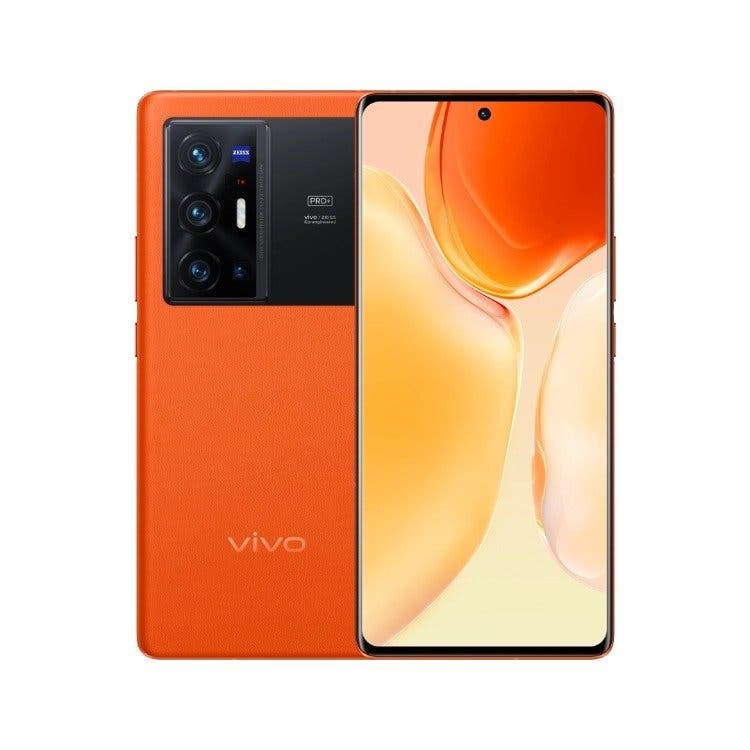
Vivo X70 Pro+
We continue our list with the Vivo X70 Pro+ that turns to be the flagship take of the series. The device has an even more advanced setup and is a gorgeous product for media consumption.
The Vivo X70 Pro+ flaunts a 6.78-inch Samsung E5 AMOLED display which is bigger and better than the 6.56-inch found on the X60 Pro+. The device also gives a step forward in resolution with 3,200 x 1,440 pixels which is a major step forward from its predecessor 1080+ and maintains the HDR support.
The new display uses an LTPO panel, therefore it can gradually adjust its refresh rate in the range 1 Hz to 120 Hz. It adjusts dynamically depending on the content shown in the screen. The touch sampling rate is 300 Hz. Moreover, the newer E5 panel also uses 25 percent less power than the older E4 panels.
Under the hood, the excellent smartphone carries the Qualcomm Snapdragon 888+. It’s better than most smartphones released this year with the SD888. This variant boasts the prime CPU core to 2,995 GHz, up from 2.84 GHz. It also boosts the AI engine by 20%. The device is paired with LPDDR5 RAM with 8 GB or 12 GB capacity. There is also 256 GB or 512 GB of UFS 3.1 storage.
The Vivo X70 Pro+ certainly ticks most of the boxes in the display and performance department. However, the big star here is the camera setup. The main camera is built around the 50 MP Samsung GN1 sensor with 1.2um pixels (2.4um with binning). There is an ultrawide camera with 48 MP resolution and a gimbal stabilization system.
There are also two telephoto modules. One is an 8 MP 125 mm periscope lens with 5 x magnification and f/3.4 lens. The latter is a 12 MP sensor with a brighter f/1.6 lens and 50 mm size. All four cameras boast some sort of Optical Image Stabilization as well as electronic stabilization. The lenses also feature ZEISS T* anti-reflective coating. Moreover, the optics-centric brand has contributed to the ultra-low dispersion glass for the lens, reducing glare and chromatic aberration. The company has changed the setup with the addition of its new Custom V1 chip that handles the image processing and doing some advanced AI magic. It also works to ensure that the system will use less energy than the chipset running the same algorithms. Also, there’s a ceramic “cloud windows”, though that’s mostly there for decoration.
The new model draws its powers from a 4,500 mAh battery which charges fast via 55 W fast-charging. In addition to this, the device has 50 W wireless fast charging. The device runs Android 11 OS with Origin OS 1.0 on top.
The Vivo X70 Pro+ is a solid smartphone, and as a result, takes a place in the top 10 smartphones for media consumption.
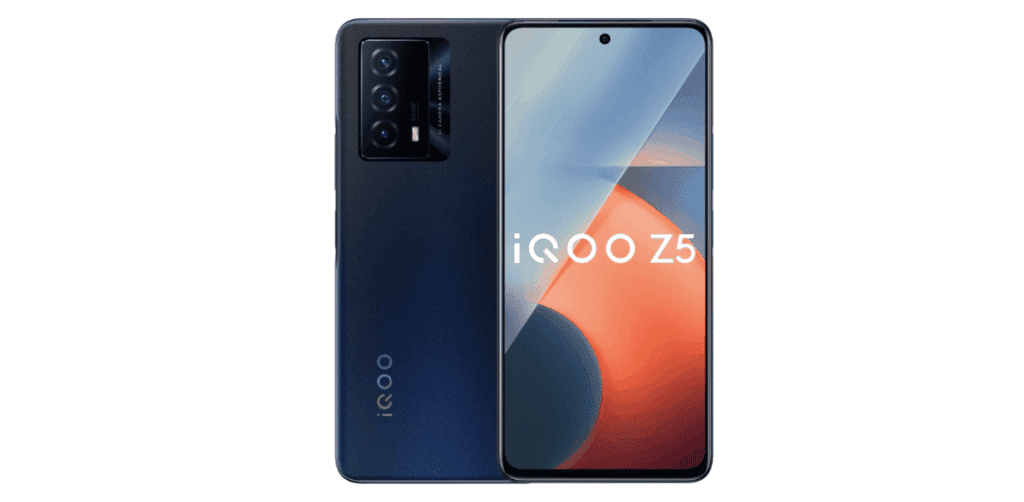
iQOO Z5 5G
The iQOO Z5 5G comes from Vivo’s subsidiary and is a new mid-range smartphone from the gaming brand. After the buzz caused by the iQOO 8 series, the brand brings a new mid-range contender. Of course. It deserves a place among the top 10 smartphones for media consumption.
The new handset flaunts a 6.67-inch IPS LCD screen with a 120 Hz refresh rate, HDR 10, and 650 nits of typical brightness. The panel has an 85.0 percent screen to body ratio, Full HD+ resolution with 2,400 x 1,080 pixels. Moreover, there is a curious protective coating dubbed “Panda Glass”. This is a rival for the Gorilla.
Under the hood, the iQOO Z5 5G draws powers from the Qualcomm Snapdragon 778G processor with the powerful Adreno 642L GPU. The device runs Android 11 OS with Funtouch 12 running in the international version and OriginOS for the Chinese version. The device has 8 GB of RAM or 12 GB of RAM depending on the variant. In terms of storage, it packs 128 GB or 256 GB, also depending on the variant.
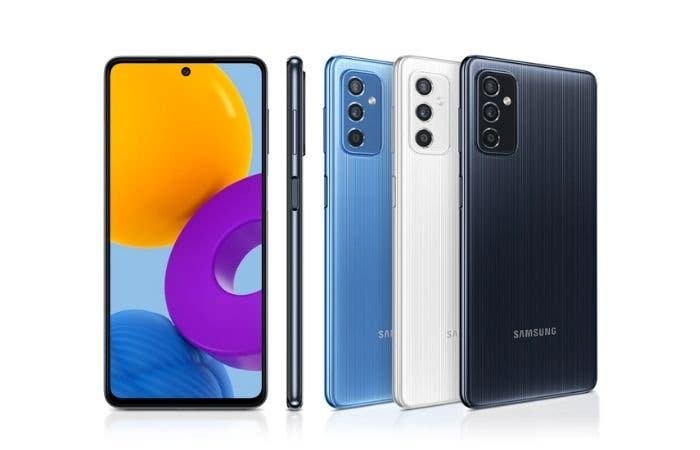
Samsung Galaxy M52 5G
